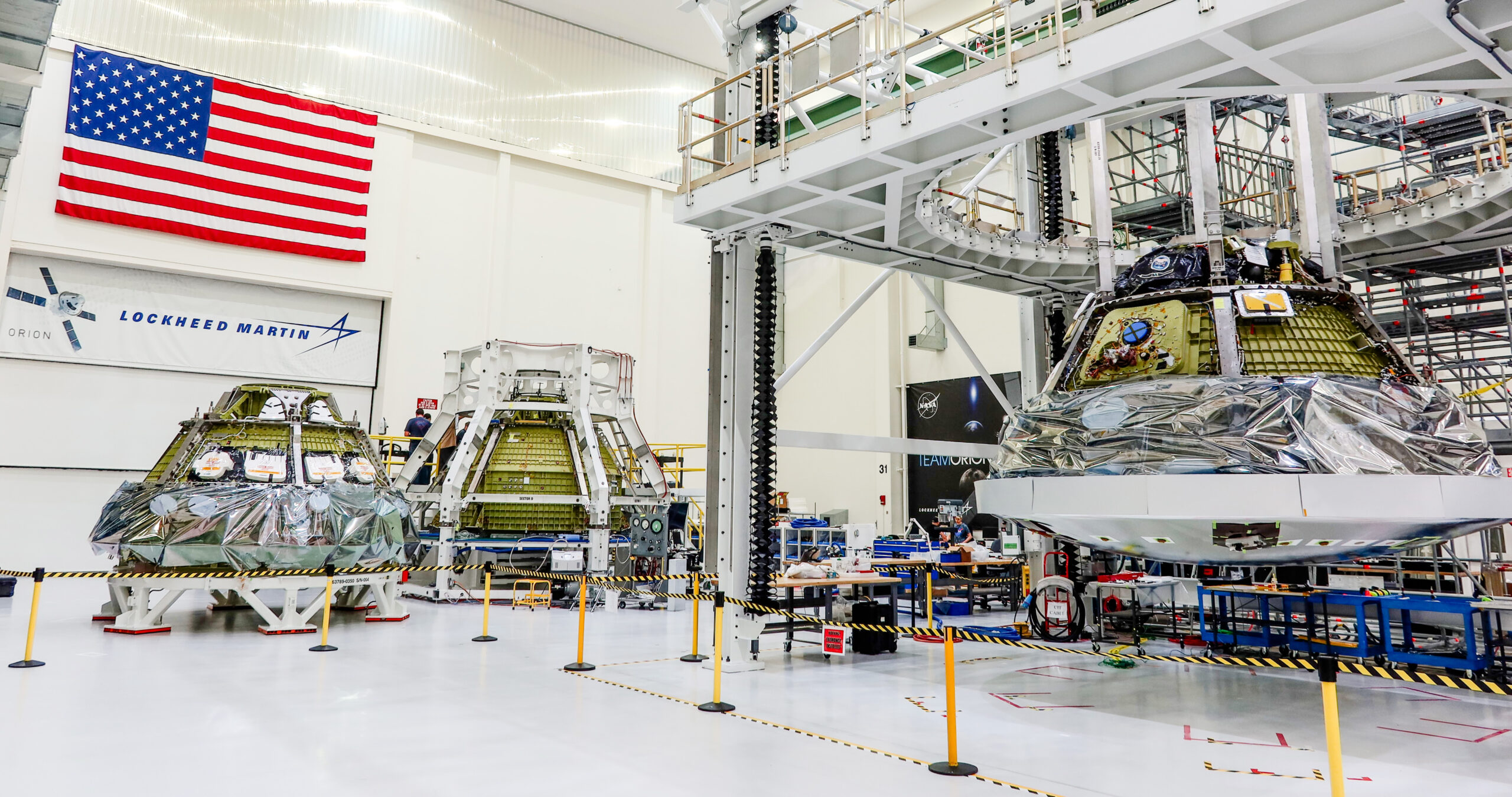
NASA is confidently aiming for late November 2024 to launch Artemis II from historic Pad 39B at Florida’s Kennedy Space Center (KSC) on the first crewed voyage to the Moon in more than five decades. Earlier today, Artemis II Commander Reid Wiseman, Pilot Victor Glover and Mission Specialists Christina Koch and Canada’s Jeremy Hansen—the latter of whom will become the first non-American to leave low-Earth orbit—gathered with senior NASA leaders to discuss progress towards what Wiseman calls “the tiniest footnote in the Artemis campaign”.
Four months since the highly visible announcement of their names to the world in April, Wiseman explained that the Artemis II crew has plunged directly into training. Following an initial “media blitz”, the quartet spent time examining spacecraft systems at the Johnson Space Center (JSC) in Houston, Texas, Orion’s prime contractor Lockheed Martin in Denver, Colo., and just last month visited Naval Base San Diego ahead of the first Artemis II recovery tests in the Pacific Ocean.
The crew is at KSC to see the Orion spacecraft for Artemis II, which teams have nicknamed “The Ship”. The conical Crew Module (CM) is deep into processing and its 16.5-foot-diameter (5.02-meter) heat shield was installed in the high bay of the Neil Armstrong Operations and Checkout Building back in June.
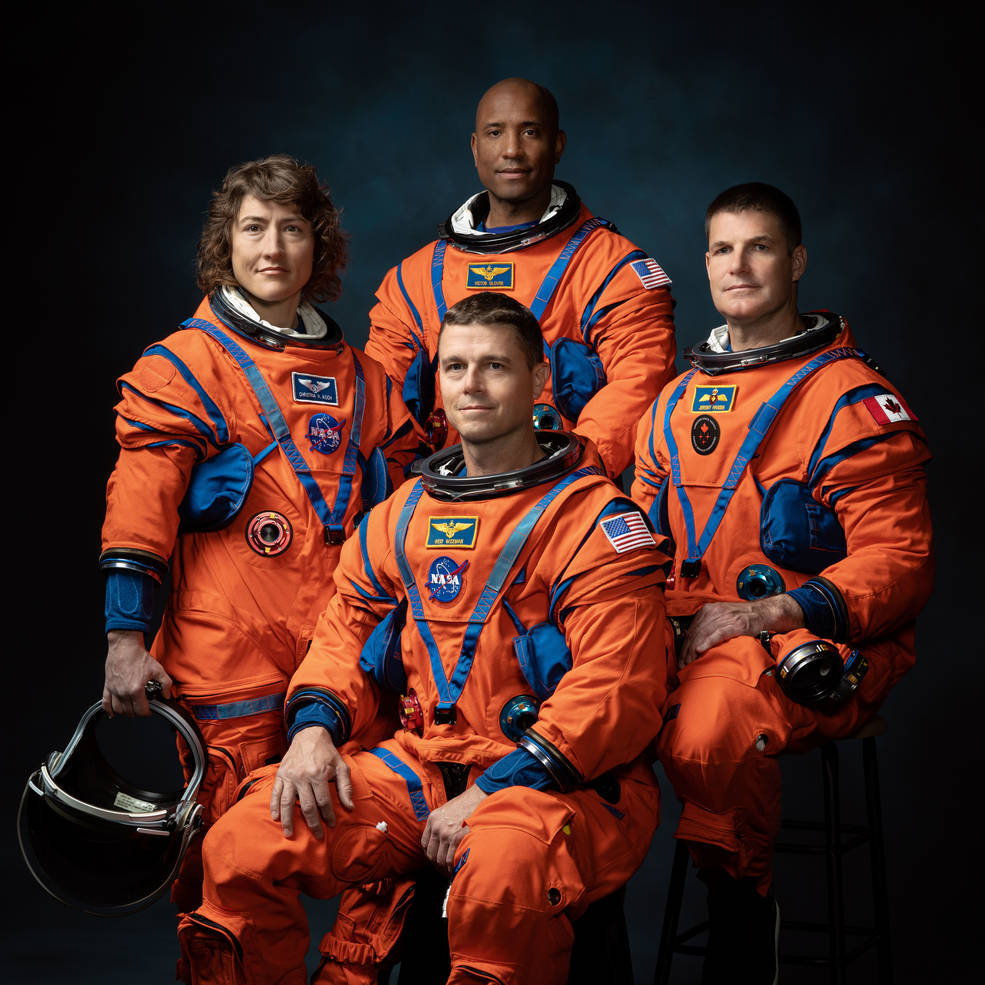
“We made it to Kennedy,” Wiseman exulted. “This is awesome!” Seeing their actual spacecraft hardware, added NASA Associate Administrator Bob Cabana, was a pretty special time, as “they know they’ve got a mission coming up”.
Although NASA’s Wiseman, Glover and Koch have all flown long-duration increments to the International Space Station (ISS)—logging more than 660 days in orbit and 12 spacewalks between them and setting empirical records for African-American spacefarers and female space travelers—Artemis II will mark the first mission of Hansen, a Canadian Space Agency (CSA) astronaut who will become the first non-U.S. citizen to travel to the Moon. Seeing “real flight hardware” for his mission the first time, Hansen said, “sent shivers down our spines”, adding that the success of the Artemis Program “is the learning that’s happening right now”.
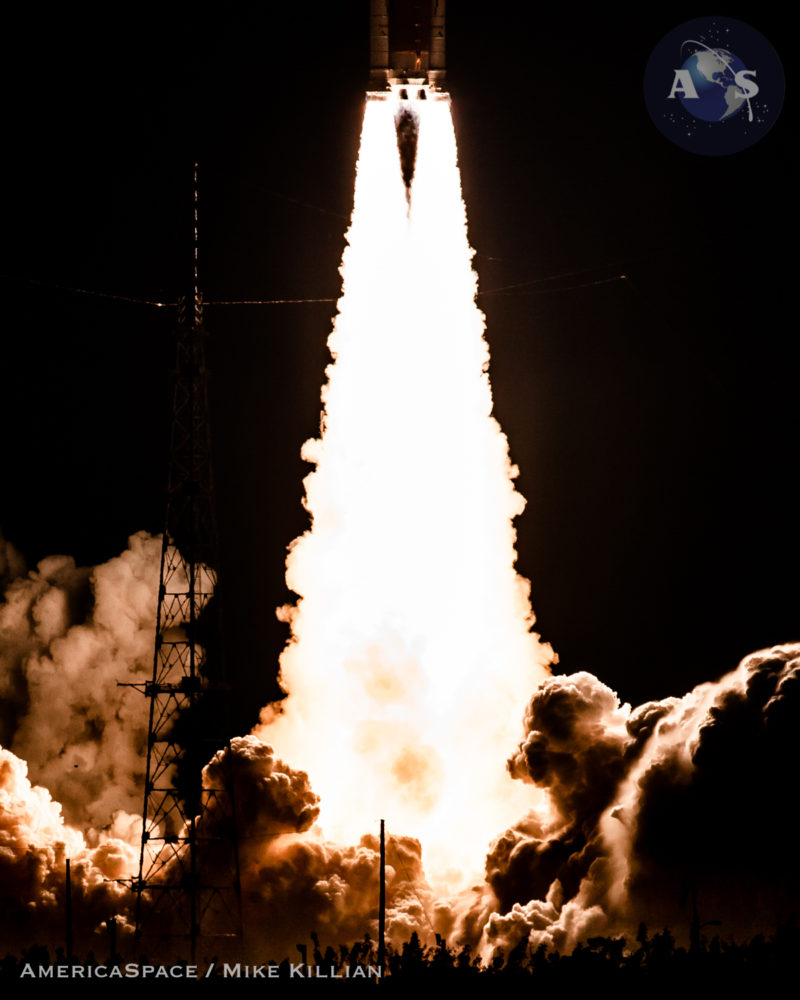
And nine months since the first 322-foot-tall (98-meter) Space Launch System (SLS) booster took flight from KSC’s historic Pad 39B, that learning continues. The Artemis I post-flight assessment review was concluded in late July, said Jim Free, associate administrator for the Exploration Systems Development Mission Directorate (ESDMD) at NASA Headquarters in Washington, D.C., with multiple forthcoming milestones in the final quarter of 2023 and the opening months of next year.
Despite the spectacular success of the uncrewed Artemis I—which launched last 16 November and spent 25 days and 1.4 million miles (2.3 million kilometers) testing systems aboard the integrated Orion CM and European Service Module (ESM) in deep space, before splashing down in the Pacific Ocean on 11 December—several “open” work items still remain, ahead of completing the flight rationale for Artemis II. However, Mr. Free noted that NASA is still aiming for late November 2024 for the launch of Wiseman, Glover, Koch and Hansen on an expected ten-day voyage to the Moon and back.
From a hardware perspective, the CM is right on the “critical path”. Its assembly is currently underway, having received its heat shield in June, after which it will be mated to the ESM and turned over to KSC’s Exploration Ground Systems (EGS) teams for processing. The Mobile Launcher (ML) will roll out from the Vehicle Assembly Building (VAB) to Pad 39B in mid-November—a couple weeks later than originally timelined, due to necessary repairs—to test upgrades implemented following Artemis I.
The ESM, meanwhile, was handed over by the European Space Agency (ESA) to NASA in June and work continues on its heat shield, with final disposition anticipated early in 2024. All components of the SLS, save the 212-foot-tall (64.6-meter) Core Stage, is currently in Florida, with stacking of the twin, five-segment Solid Rocket Boosters (SRBs) slated to commence in February.
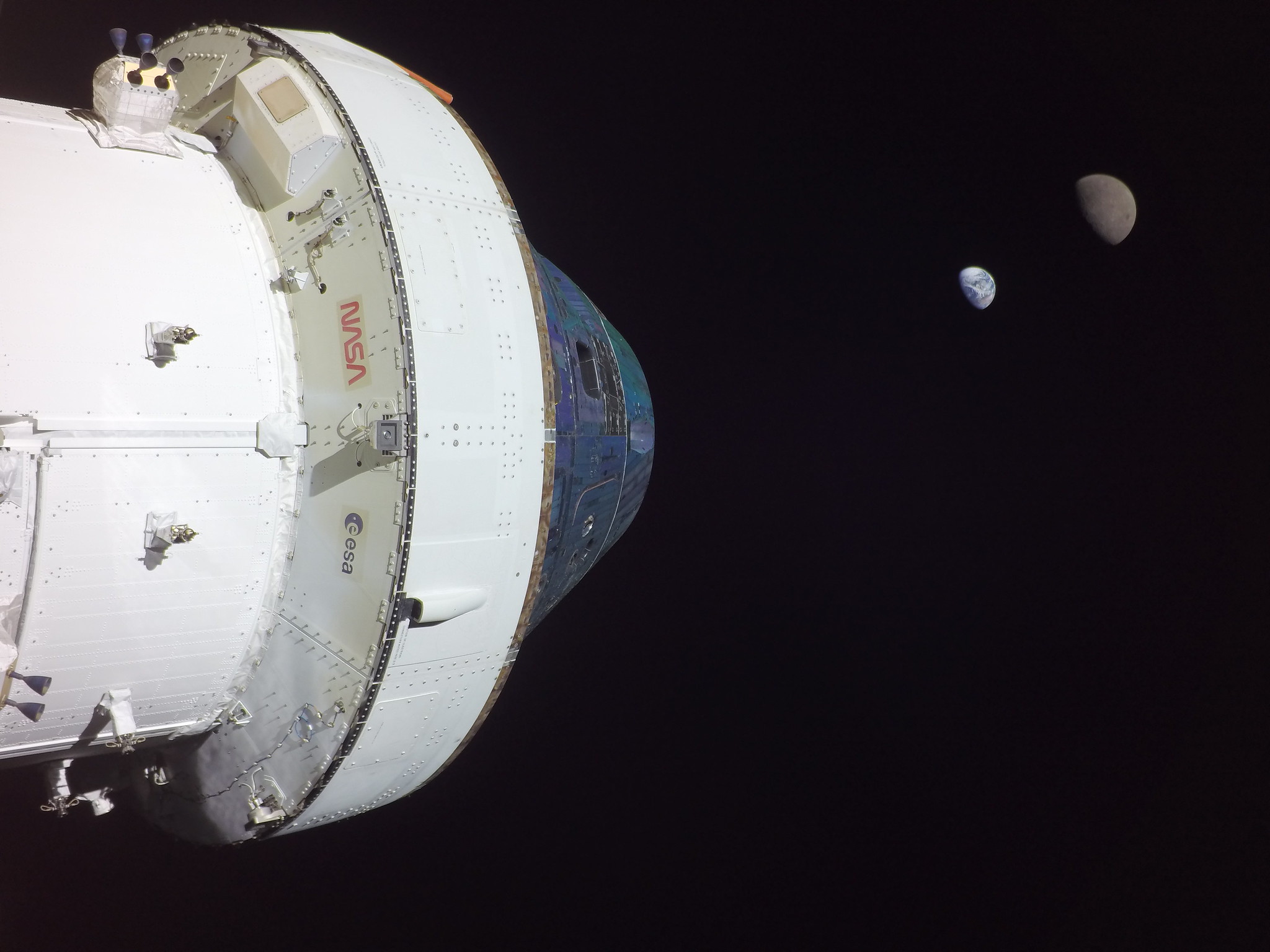
Mr. Free explained that teams are “not working major issues right now” and a launch in the late November 2024 timeframe remains feasible. He added that the second crewed mission, Artemis III—currently targeted to land the first humans on the lunar surface in over five decades—also remains anchored to its launch date in December 2025 and that the agency is “working to contractual dates” with the builders of its Human Landing System (HLS), SpaceX of Hawthorne, Calif., and Blue Origin of Kent, Wash., to achieve that target.
Space suits for Artemis III and beyond, contracts for which were awarded to AxiomSpace, Inc., of Houston, Texas, earlier in 2023, are expected to head into Preliminary Design Review (PDR) in October. And Mr. Free explained that NASA leaders visited Starbase in Boca Chica, Texas, a few weeks, “trying to understand [SpaceX’s] schedule some more” as it readies its Starship/Super Heavy stack for transatmospheric test flights.

The 394-foot-tall (120-meter) booster first launched out of Starbase last April, under an estimated 16.7 million pounds (4.5 million kilograms) of thrust, the highest liftoff impulse of any orbital-class vehicle in history. But after suffering multiple engine failures immediately after launch, the behemoth was remotely destroyed at altitude by the Range Safety Officer (RSO) and a Federal Aviation Administration (FAA) investigation into the mishap was expected to take several months to complete.
“They need to launch multiple times,” Mr. Free said of SpaceX’s super-heavy booster, then launch for NASA multiple times. That will be required in order to launch and fuel the Starship HLS for Artemis III.
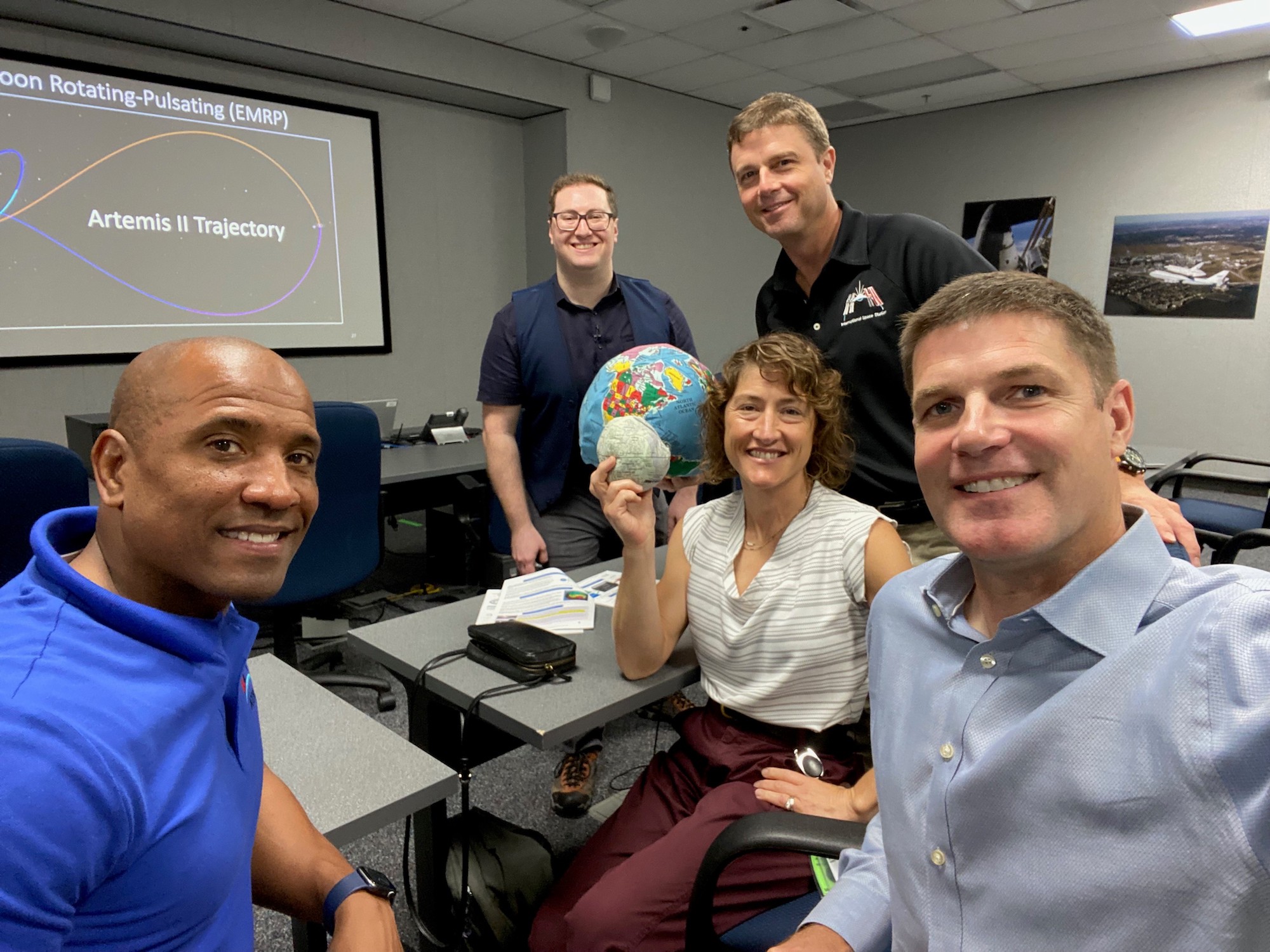
The watchword, of course, remains safety, a point emphasized by Colonel Cabana, who recalled witnessing the January 1986 Challenger tragedy as a newly selected astronaut candidate, then witnessing the February 2003 Columbia disaster as a veteran spacefarer and senior NASA official. “This mission,” Mr. Free stressed, in response to questions about possible expansions of Artemis II to a full lunar-orbital mission, “was designed with safety in mind.”




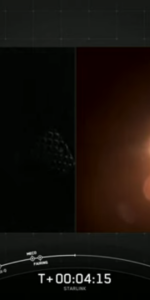

One Comment
One Ping
Pingback:NASA Delays Artemis II and III Missions, Cites “Incredibly Large Challenge” - SPACERFIT